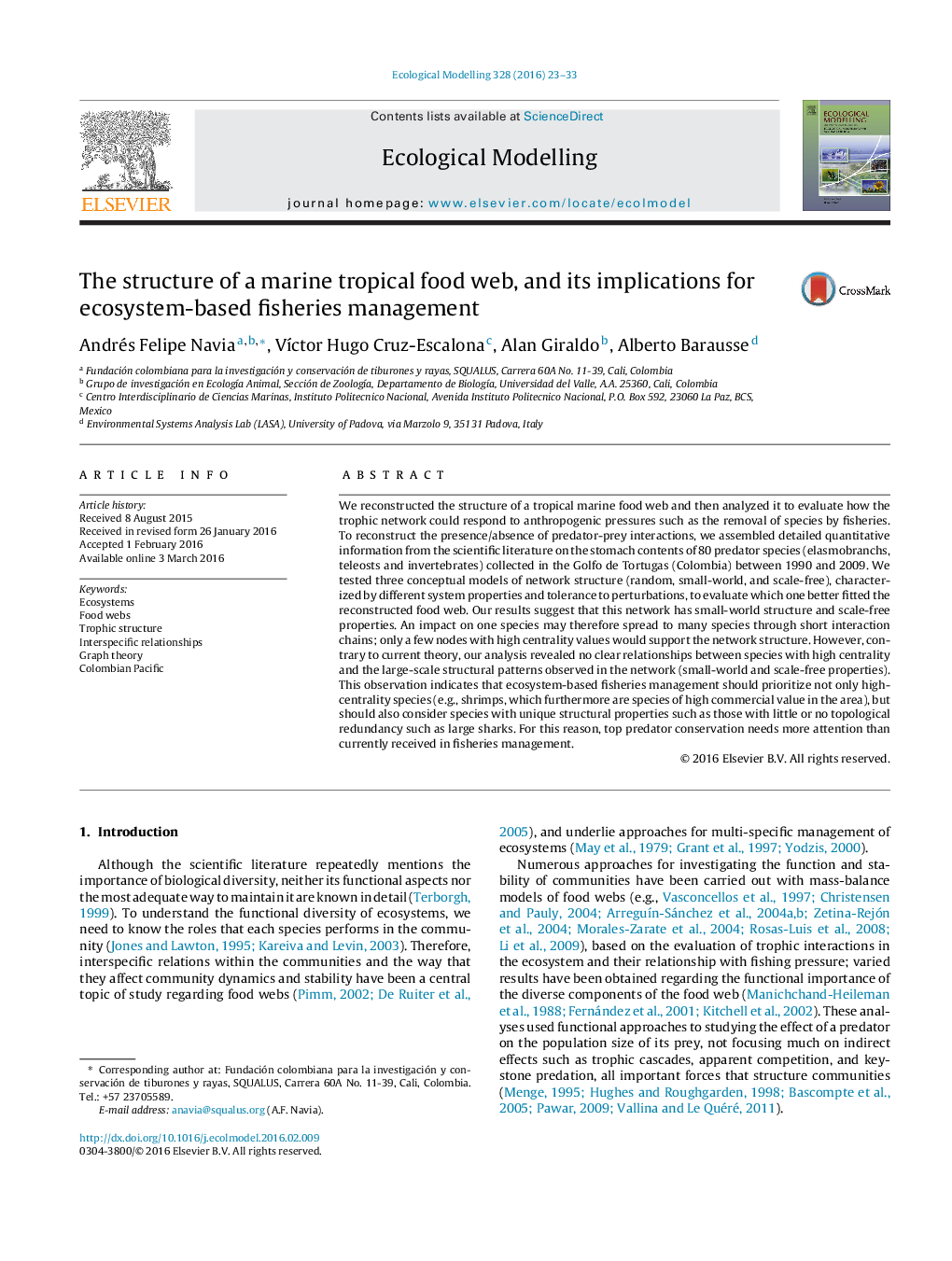| کد مقاله | کد نشریه | سال انتشار | مقاله انگلیسی | نسخه تمام متن |
|---|---|---|---|---|
| 6296166 | 1617419 | 2016 | 11 صفحه PDF | دانلود رایگان |
- We assessed how the loss of species with topological uniqueness impacts the GT web.
- Top predators had the greatest topological uniqueness (TU).
- The removal of TU species had higher impact than removal of more connected species.
- The loss of the hub node does not necessarily cause major collapse in the web.
- In fisheries, keystone species do not necessarily have the highest economic value.
We reconstructed the structure of a tropical marine food web and then analyzed it to evaluate how the trophic network could respond to anthropogenic pressures such as the removal of species by fisheries. To reconstruct the presence/absence of predator-prey interactions, we assembled detailed quantitative information from the scientific literature on the stomach contents of 80 predator species (elasmobranchs, teleosts and invertebrates) collected in the Golfo de Tortugas (Colombia) between 1990 and 2009. We tested three conceptual models of network structure (random, small-world, and scale-free), characterized by different system properties and tolerance to perturbations, to evaluate which one better fitted the reconstructed food web. Our results suggest that this network has small-world structure and scale-free properties. An impact on one species may therefore spread to many species through short interaction chains; only a few nodes with high centrality values would support the network structure. However, contrary to current theory, our analysis revealed no clear relationships between species with high centrality and the large-scale structural patterns observed in the network (small-world and scale-free properties). This observation indicates that ecosystem-based fisheries management should prioritize not only high-centrality species (e.g., shrimps, which furthermore are species of high commercial value in the area), but should also consider species with unique structural properties such as those with little or no topological redundancy such as large sharks. For this reason, top predator conservation needs more attention than currently received in fisheries management.
Journal: Ecological Modelling - Volume 328, 24 May 2016, Pages 23-33
